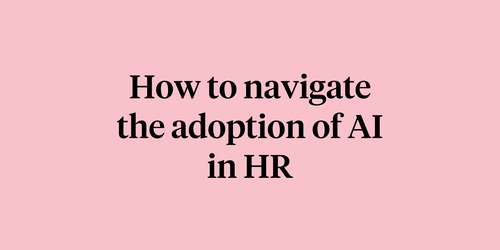
Psychological capital: The key to high performance?

Written by

Senior People Scientist, EMEA, Culture Amp
HR practitioners typically don’t have spare time to brush up on psychological research, but these frameworks can be a helpful lens through which to improve your people practices. The ultimate goal of people leaders is to create an environment that supports individual growth and performance. Research around psychological capital is full of useful lessons on how to better inspire and motivate teams.
In this article, we’ll break down the definition of psychological capital and its applications to coaching, feedback, and performance.
What is psychological capital?
The focus of psychologists has shifted away from solely examining what makes individuals clinically unwell to what makes other individuals thrive. Similarly, organizational psychologists are increasingly looking at what makes some individuals thrive and perform highly at work. Developed against a backdrop of positive psychology, psychological capital (PsyCap) refers to a set of resources individuals can use to help improve their success.
Within this context, Fred Luthans and his colleagues defined PsyCap as characterized by the following:
- Having confidence (self-efficacy) to take on and put in the necessary effort to succeed at challenging tasks
- Making a positive attribution (optimism) about succeeding now and in the future
- Persevering toward goals and, when necessary, redirecting paths to goals (hope) to succeed
- When beset by problems and adversity, sustaining and bouncing back and even beyond (resiliency) to attain success.
Four constructs of psychological capital
PsyCap is composed of four constructs: hope, efficacy, resilience, and optimism - which together spell out the acronym HERO. As a result, it has been deemed as representing the ‘hero’ within individuals.
State vs. trait
Psychological capital is a state rather than a trait. While traits (e.g., personality) can moderate important facets of behavior in the workplace, they’re stable over time and can’t be easily altered. This means they can be less helpful to psychologists and HR practitioners looking to identify opportunities for more immediate positive change among individuals and across organizations. States are malleable, meaning training and attention from leaders can impact development rather than just affect immediate mood.
Trait vs state - what’s the difference?
| Trait e.g. Personality | State e.g. Psychological Capital |
| Stable over time - relatively fixed | Somewhat fluid - more enduring than emotions but less so than traits |
| Not easily altered | Malleable - open to development |
PsyCap’s impact on performance
By definition, PsyCap is critical to performance development and management. It highlights the elements of a strong performance culture that are often neglected or challenging to build out in a scalable manner. We spend a lot of time setting goals and holding people accountable in the workplace. But how much time do we spend bolstering these important dimensions of psychology, which can actually guide employees to success by boosting their personal resources and PsyCap? Moreover, how are we building processes that strengthen these aspects of PsyCap rather than eroding them?
Research shows the connection between PsyCap and performance
There are many links between PsyCap and performance development. For example, Carol Dweck’s definition of "growth mindset" clearly parallels optimism and hope - particularly around her philosophy of the power of yet. Dweck’s reframing of failures as opportunities to learn and grow links to methodologies that boost and enhance resilience.
Self-efficacy and a focus on building confidence around individual strengths also tie to the work of psychologist Richard Boyatzis. Boyatzis experimented with coaching styles by having participants undertake an interview either focused on a positive approach (emphasizing their dreams and hopes) or a negative style (focusing on external aims and the individual’s perceived weaknesses in reaching them). This study found that those in the former group showed brain responses centered around positive memory, happy feelings, and reward centers of the brain. However, those in the problem-focused, negative interview showed activity in areas of the brain suggesting sadness, anxiety, and worry - the brain state least likely to support problem-solving.
Bolstering self-efficacy and confidence is critical if we want to empower our people to perform highly and achieve stretch goals.
Building PsyCap into your people strategy
At this point, you probably like the idea of building psychological capital into your approach but need guidance on how to put this into practice. Below we’ve shared some examples of ways to nurture each component of psychological capital in your management strategy – particularly in the performance process.
Hope
Approaches that have been proven to work here center around goal setting. Managers can foster hope in individuals they lead by seeing each report as an individual, allowing them to set their own goals (rather than just top-down cascading goals), and recognizing and rewarding unique and creative ways of achieving them – not just prescribing conventional methods.
Through coaching, managers can also help individuals brainstorm ways of overcoming blockers. Enabling them to identify a new approach to obstacles helps maintain their sense of hope.
Efficacy
Luthans and his colleagues identified four sources of efficacy that can be developed to help drive goal-focused performance.
-
Mastery and successful experiences
Celebrating small successes in achieving a goal and recognizing personal achievements are key to building individual efficacy. Ensure your direct reports have goals allowing them to best apply their strengths. -
Vicarious learning or modeling
Allowing an individual to observe others overcoming workplace barriers fosters self-confidence. This aligns with work on psychological safety since individuals are likelier to thrive in an environment where they’re not punished for making mistakes. A simple form of vicarious learning in workplaces can be achieved by sharing difficulties, mistakes, and errors and how they were overcome. -
Social persuasion and positive feedback
Hearing others demonstrate their confidence in you and provide positive feedback can help build confidence. Research has even shown that positive feedback and social recognition have a more significant impact on performance than monetary rewards. At Culture Amp, we use ‘Mad Props’ to publicly share praise and our performance module to share in-the-moment feedback. -
Psychological stimulation and wellbeing
Working through self-limiting beliefs can encourage a more optimistic outlook on individual abilities. Leaders and mentors can tap into cognitive-behavioral coaching – helping individuals reframe their thinking to enhance confidence. For example, physiological responses, such as feeling shaky before a presentation, can be reframed as helpful energy, such as excitement. This will support them to succeed rather than further undermine their confidence.
Resilience
We all want to create more of this in ourselves and those we lead. Although there are several strategies you could use, consider these two different approaches suggested by Luthans and his colleagues.
-
Asset-focused strategies – Enhancing the perceived and actual resources available to an individual can help when dealing with difficulty. This can be done by encouraging individuals to build their human capital (knowledge, skills, etc.), social capital (relationships and networking), and overall PsyCap.
It may be useful to consider formal training, peer learning, and coaching to develop human capital. Social capital can be supported by group learning and sharing and by creating forums for relationship-strengthening, which can serve as resilience-affirming communities during times of difficulty. - Risk-focused strategies – Helping individuals interpret and frame potential risks more positively is an opportunity for growth. Managers can support this approach through continuous feedback and ongoing mentorship conversations.
Optimism
How can we inspire optimism during performance management conversations? Setting realistic expectations and goals empowers individuals to jump in and do their best.
More than this, though, theorist Sandra L. Schneider’s definition of optimism can frame how we support individuals – we should aim to help them have ‘leniency for the past, appreciation for the present, and opportunity seeking for the future.’ Leniency for the past is not the same as minimizing or denying one’s role in any failures, but examining what has happened and giving the individual the benefit of the doubt.
Help individuals identify aspects of themselves, such as intrinsic and consistent factors, to draw on for a more optimistic future. You can do this by reminding them of their strengths and past success.
Making HEROs by leveraging the power of psychological capital
Improving performance starts with psychological capital. With the right set of intellectual and emotional tools, individuals are empowered to embrace challenges without fearing failure. Leaders who proactively look to integrate the HERO framework into their management approach are best positioned to inspire their teams to make meaningful contributions.

Looking to increase employee performance?
It all starts with the manager.

